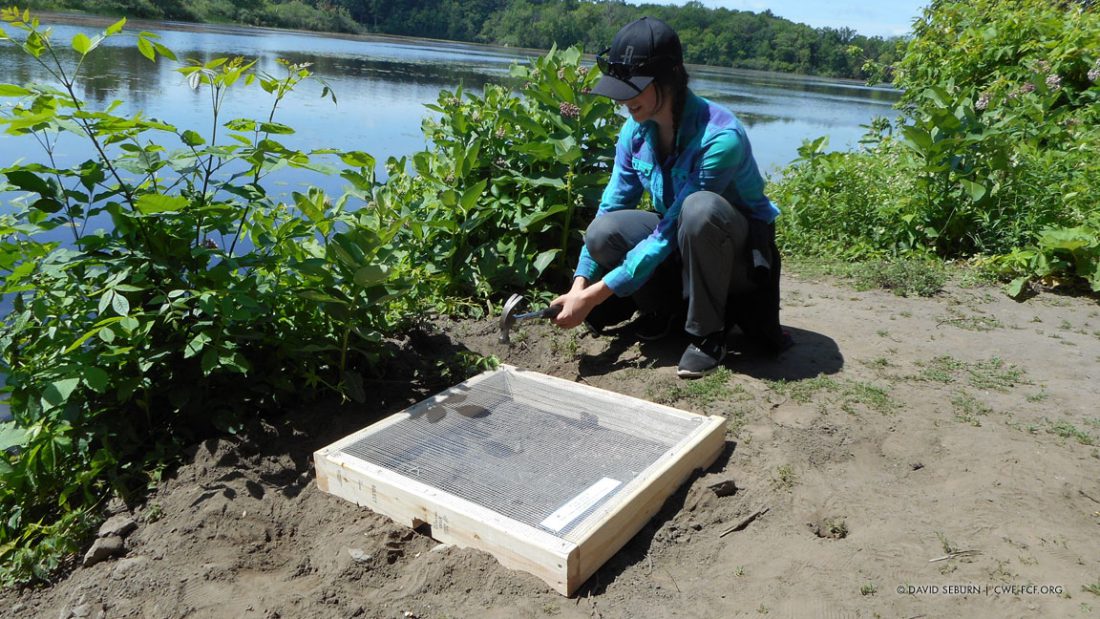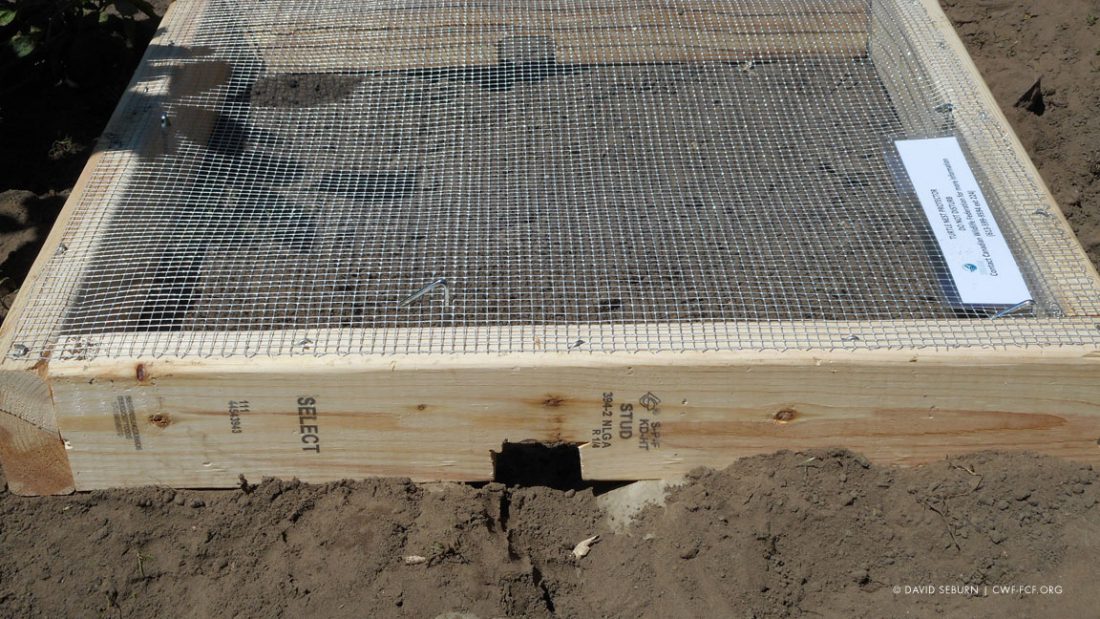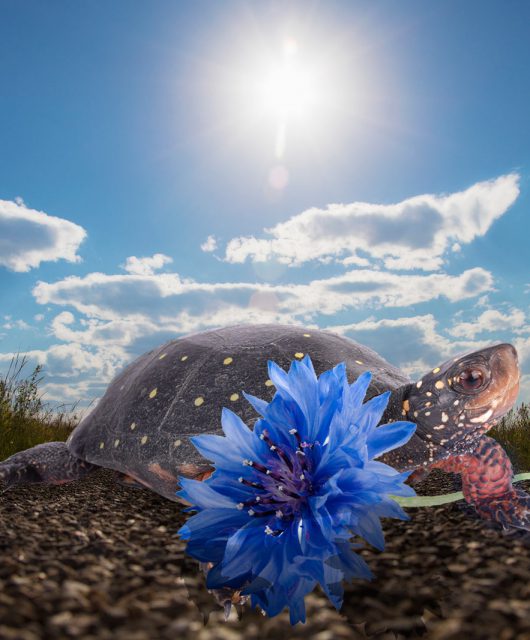Every June female turtles leave their homes in swamps and marshes to lay their eggs. A turtle “nest” is a fairly simple affair: the female digs a hole in the ground in a sunny location, lays her eggs in the hole, and then covers up the eggs with the soil. The eggs hatch in a few months and the hatchlings head to water.
That’s how the process works in theory, but in reality there are many creatures that would love to eat all of those tasty turtle eggs. A certain amount of nest predation by raccoons and other animals has no long-term effect on turtle populations, but in some areas there are so many predators that they could devour almost all the turtle nests. This is why complete nest failure year after year is a serious threat.

One simple way to help some nests survive is to cage them. A nest cage does not affect the conditions in the nest, but keeps predators out. As part of our Help the Turtles program, we have been placing nest cages on turtle nests around the city of Ottawa. The cages are roughly two feet by two feet in size and built from 2×4 boards and hardware mesh. The cages are held in place with long spikes nailed into the ground, to deter raccoons from pushing the cages aside.
The real challenge is finding a turtle when she is nesting so that the cage can be placed on the nest as soon as the female is finished. Finding a turtle on land before she starts to nest may simply spook the turtle and cause her to return to the wetland and nest another day. And after the female has finished nesting it is often hard to find any sign that eggs were laid. Nesting surveys usually have to be undertaken either early in the morning or in the evening when turtles are more likely to nest.
If you are out exploring areas near wetlands this summer you may find a turtle nest cage installed by the Canadian Wildlife Federation or other groups trying to help turtles. These cages usually have a tag indicating what it is, but these tags can sometimes disappear. Please do not disturb the cages as that is the only protection the developing eggs have.

Turtles face many threats in today’s world, from traffic mortality to habitat destruction. They need all the help they can get, and caging some nests so that the eggs will hatch and produce hatchlings is one way that we’re giving turtles a head start.





2 comments
We have a turtle that comes every year to lay her eggs we saved over 20 last year.
But this year the predators raided the nest 2 nights in a row we have a mesh with bricks on top of it ? Is there anything else we can do?
Hi Roxanne
Thank you for your efforts in helping our turtles! You could try building a nest protector. You can find the specifications here: https://cwf-fcf.org/en/explore/turtles/htt_nest_protector_en_lr.pdf
If you’re interested, you could learn other ways to help our freshwater turtles at http://helptheturtes.ca
Good luck!